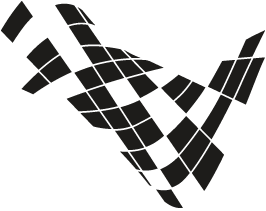Kartik Chandrasekhar is currently a research associate, working on Structural Health Monitoring (SHM) of wind turbine blades on a collaborative project between the University of Sheffield and Siemens Wind Power. Kartik completed his MEng in Aerospace Engineering in 2012, and his PhD in the Dynamics Research Group at the University of Sheffield in 2016.
Research interests:
Mechanical vibrations, image processing, damping, friction, structural health monitoring, structural design, finite element analysis.
Current research:
During the course of his PhD, Kartik studied the mechanical and microstructural behaviour of tangled metal wire (TMW) devices. TMW devices offer an alternative damping strategy to the traditional viscoelastic damping techniques that have been widely used. In several applications, such as in the space and defence fields, the operating conditions do not allow for such solutions. Since TMW devices are metallic, they operate resiliently over a wide range of environments. The microstructure consists of woven and compressed spiral wires in an entangled state. Whilst the properties are favourable, the manufacturing process makes the microstructure complex. Kartik’s research allowed the microstructure to be studied quantitatively using a novel, first of its kind, algorithm that performed processing of micro-computed tomography images, and reconstructing the 3D geometry, which facilitated the development of analytical models to be made. The low and high frequency experimental work carried out during the research showed that the behaviours of TMW devices are amplitude dependent, and frequency independent, a characteristic of Coulomb friction systems. The analytical models developed were capable of exhibiting the experimentally observed hysteretic behaviour of the TMW devices with reasonable accuracy.
As a postdoctoral research associate, Kartik has been working on the area of structural health monitoring. His first task in this position was to improve the SHM practices that were being carried out on existing blades operational on the entire wind turbine fleet. Based on the physics of the blades and the turbines, Kartik proposed, and implemented changes to the SHM system to make it a more reliable tool for damage detection. His research now involves developing a new and reliable SHM system that can detect onset of damage on wind turbine blades using state-of-the-art sensors.

Fig. 1: TMW device

Fig. 2: Image processing algorithm identifies wire locations. Hollow objects indicate that the wire has been identified by the algorithm. Notice that wires that are in contact are successfully segmented and identified, an objective that cannot be met using standard image processing tools.
 |
 |
Fig. 3: Various views of TMW microstructure obtained from image processing.

Fig. 4: Comparison between experimental results and results obtained from analytical modelling.
Publications:
- K. Chandrasekhar, J. A. Rongong, E. J. Cross, 2014, Frequency and amplitude dependent behaviour of tangled metal wire dampers, Proceedings of International Conference on Noise and Vibration Engineering, Leuven, Belgium.
- K. Chandrasekhar, J. A. Rongong, E. J. Cross, 2016, Mechanical and microstructural behaviour of tangled metal wire dampers, International Conference on Advances in Experimental Mechanics, Exeter, United Kingdom.

